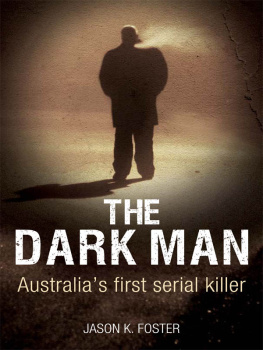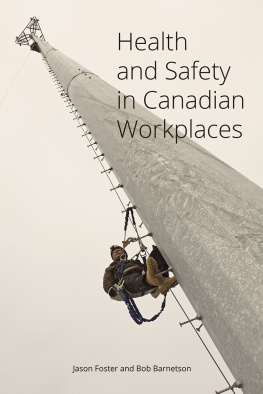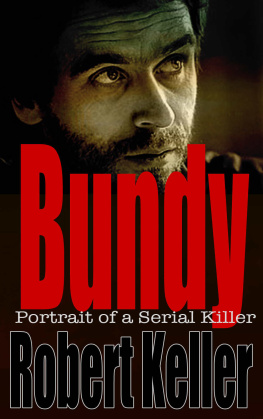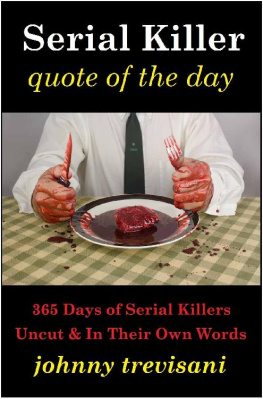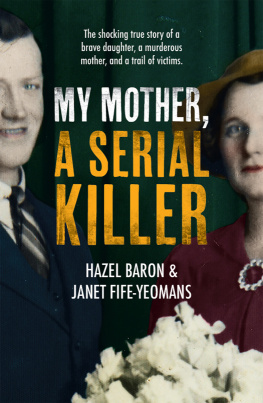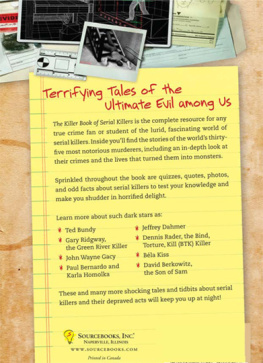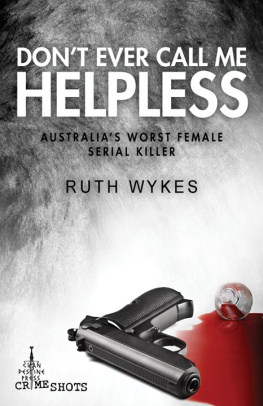Jason K. Foster - The Dark Man: Australias First Serial Killer
Here you can read online Jason K. Foster - The Dark Man: Australias First Serial Killer full text of the book (entire story) in english for free. Download pdf and epub, get meaning, cover and reviews about this ebook. year: 2013, publisher: Big Sky Publishing, genre: Adventure. Description of the work, (preface) as well as reviews are available. Best literature library LitArk.com created for fans of good reading and offers a wide selection of genres:
Romance novel
Science fiction
Adventure
Detective
Science
History
Home and family
Prose
Art
Politics
Computer
Non-fiction
Religion
Business
Children
Humor
Choose a favorite category and find really read worthwhile books. Enjoy immersion in the world of imagination, feel the emotions of the characters or learn something new for yourself, make an fascinating discovery.
- Book:The Dark Man: Australias First Serial Killer
- Author:
- Publisher:Big Sky Publishing
- Genre:
- Year:2013
- Rating:5 / 5
- Favourites:Add to favourites
- Your mark:
- 100
- 1
- 2
- 3
- 4
- 5
The Dark Man: Australias First Serial Killer: summary, description and annotation
We offer to read an annotation, description, summary or preface (depends on what the author of the book "The Dark Man: Australias First Serial Killer" wrote himself). If you haven't found the necessary information about the book — write in the comments, we will try to find it.
The Dark Man: Australias First Serial Killer — read online for free the complete book (whole text) full work
Below is the text of the book, divided by pages. System saving the place of the last page read, allows you to conveniently read the book "The Dark Man: Australias First Serial Killer" online for free, without having to search again every time where you left off. Put a bookmark, and you can go to the page where you finished reading at any time.
Font size:
Interval:
Bookmark:
THE
DARK MAN
Australias first serial killer
JASON K. FOSTER

Bibliography
Blue Mountains Organisations
For further information and guided walking tours of the lagoon and of Lee Wellers grave contact the Glenbrook Historical Society (PO BOX 38, Glenbrook, 2773) or the Blue Mountains Association of Cultural Heritage Associations - www.bluemountainsheritage.com.au/history/
Books
Travers, Robert, Murder in the Blue Mountains: Being the True Story of one of Australias Most Notorious Killers, Hutchison Australia, Melbourne, 1972
Newspapers circa 1896/97
The Adelaide Advertiser
The Argus (Melbourne)
The Brisbane Courier
The Kalgoorlie Argus
The Mercury (Hobart)
The Nepean Times
The Northern Star
The Rockhampton Capricornian
The South Australian Register
The Sydney Morning Herald
The San Francisco Call
The West Australian
Epilogue
Frank Butlers body was left to hang in the courtyard like a slab of meat hanging in an abattoir. The public, hungry for a final glimpse of the murderer, were herded into the courtyard and circled around the body. The newspapers, despite their unwillingness to print words such as hell and damn, were all too happy to publish numerous pictures of the dead man. |
Prominent scientists and criminologists of the era desperately wanted to have Butlers brain removed so that it could be examined, many people feeling certain that a mass murderer would not have the same brain as a normal human being, but the Minister of Justice denied this request. |
With the trial and execution complete, the Attorney-General, Mr Want, and the rest of Australia, were shocked to receive a bill from the American authorities for 6000, or US$28,000, to cover the cost of Butlers incarceration in the States and his lawyers, full details of which are available for public viewing in the State Library of New South Wales. |
For their tireless efforts, John Roche received 6, as did Hector McLean. Conroy, McHattie and other officers who worked on the case received 3 each, and 43 pounds was divided amongst various members of the public who had assisted in the search parties. However, the colonial secretary eventually saw fit to award Roche another 30, McHattie another 25 and Conroy another 15. |
Jack Want, in communications with the Legislative Council, had the final say on the case, concluding by noting, If, in the future, we are to be saddled with bills of this nature, I shall deem it my duty in such cases to advise the Government to allow foreign countries to keep our criminals. |
A New Path
7 August 1896
As the Marlborough entered Sydney Heads, Frank Harwood stood at the bow examining the sandstone cliffs and rugged bushland lining the coast. Night was descending, and the majesty of the harbour intensified as the setting sun sent glistening sparkles skipping over the crests of the small waves. A cool evening wind blew, and the clouds began to thicken in the skies above. The harbour was quiet, with most ships preferring to sit the night out and set sail in the morning. The Marlborough docked in Circular Quay with Harwood still standing at the bow, watching the residents of Sydney moving to and fro along the waterfront, silhouetted under the street lanterns, some making their way home, others to an inn for a quiet drink after a hard days labour.
The Marlborough eventually moored, and the passengers soon disembarked. Walking down the gangway, Harwood had a spring in his step as he entered the crowds, sensing opportunity with every new face; his prey, his next victim, was somewhere among them. Turning down Pitt Street, he examined several hotels before finding one that took his fancy: Gilhams Hotel.
Inside the entrance, he found a slightly rounded, middle-aged lady sitting behind a large wooden desk.
Good evening, sir, she said. I am Mrs Gilham. How may I help you?
Good evening, madam, my name is Frank Harwood. Do you have any beds?
Yes, sir, we do. Do you have any idea how long you will be staying for?
Not really; a few days, a week maybe.
Mrs Gilham smiled and asked for some identification. Rummaging through his bag, Harwood pulled out the certificates and handed them to her. She took a slight interest in the clinking and clanging that came from his bag, but paid little attention, as travellers who were carrying everything they owned were a familiar sight in her establishment. After reading the certificates and recording his name in her ledger, she handed them back to him.
Thank you, Mr Harwood. Are you intending to do some mining whilst youre in New South Wales?
Yes, maam, I intend to head out west shortly.
Well, best of luck, she said as she handed him his room key.
Thank you, but I doubt Ill need it! he replied jovially as he took the key and headed upstairs to find his room.
Over the next few days, Harwood familiarised himself with the centre of the city, its grid-patterned streets making it easy to find his way around. With each passing day, the voice inside him grew stronger; it was time to set the first stage of his plan into motion. He walked along Pitt Street until he reached George Street, which he followed to Hunter Street, and then proceeded to the corner of Phillip Street, where he entered The Sydney Morning Heralds advertising offices, spoke briefly to a clerk while he placed his ad, and then returned to the hotel to wait. The ad read:
Mining partner wanted to go equal shares. Expedition to western goldfields. Apply Gilhams Hotel, Pitt Street.
12 August 1896
After enjoying a roast lamb dinner, Frank Harwood sat in the drawing room smoking a cigarette as he read through the dozens of responses to his ad. One in particular intrigued him, and he read it over and over again.
Dear Mr Harwood, would love to join you on this expedition. Happy to go half shares. Meet you at Mrs Gilhams Hotel tomorrow night at 6 pm. Mr Burgess.
Many respondents had come and gone over the last few days, but none had been suitable; they either knew too many people or had large families. Several had appeared over the course of the last hour, and each time a new man had entered the room, Harwood had looked up to see if it was Mr Burgess. Unfortunately for them, they were travellers looking for a room, and Mrs Gilham had politely turned each one away, as her hotel was full. Now the bell above the door jingled once more, and Harwood looked up expectantly. A young man in his late twenties, slim with blond hair and a neat, tidy moustache stepped through the doorway. Harwood had seen his kind before, in the Scandinavian countries, and something inside him sensed that this was his man.
Good evening, madam, the man said. My name is Mr Burgess.
Good evening, sir, Mrs Gilham replied. I am sorry, but I cannot offer you a room, as we are currently full.
Burgess looked slightly confused, but before he could utter any response, Harwood was at his side. Its all right, Mrs Gilham, hes with me.
Burgess smiled, revealing several gold fillings.
Will you be checking out tomorrow then, Mr Harwood? said Mrs Gilham.
Yes, maam, I believe I will be.
Well, seeing as this man is a friend of yours, I think I can muster up a spare room for one night. It is only a tiny single that I rarely use. I hope that will be acceptable.
Any room is fine, maam, Burgess said politely.
Next pageFont size:
Interval:
Bookmark:
Similar books «The Dark Man: Australias First Serial Killer»
Look at similar books to The Dark Man: Australias First Serial Killer. We have selected literature similar in name and meaning in the hope of providing readers with more options to find new, interesting, not yet read works.
Discussion, reviews of the book The Dark Man: Australias First Serial Killer and just readers' own opinions. Leave your comments, write what you think about the work, its meaning or the main characters. Specify what exactly you liked and what you didn't like, and why you think so.

